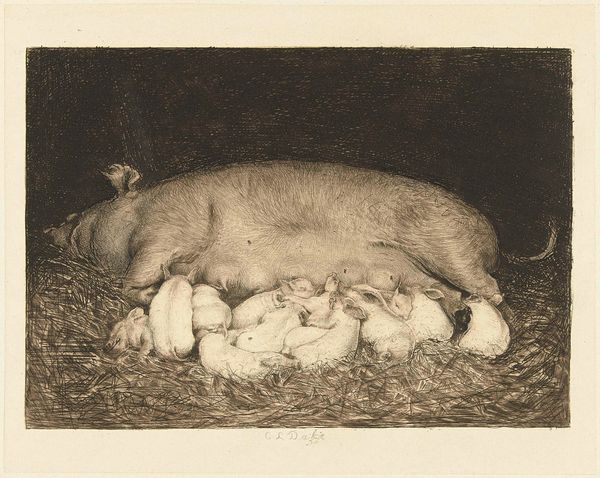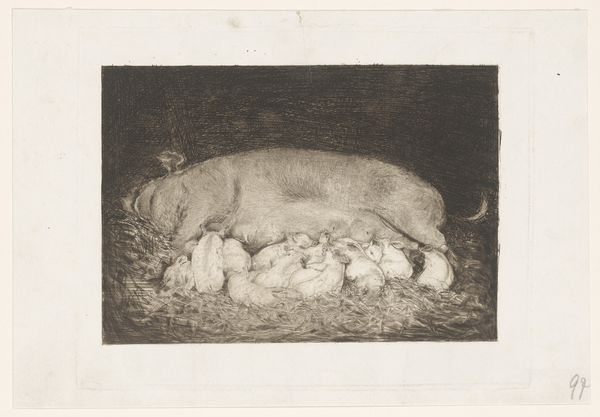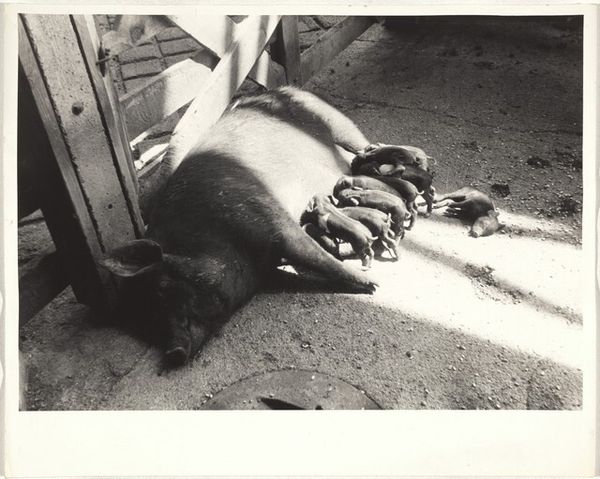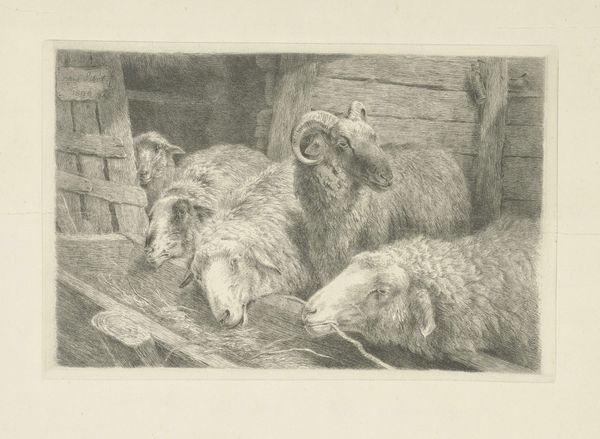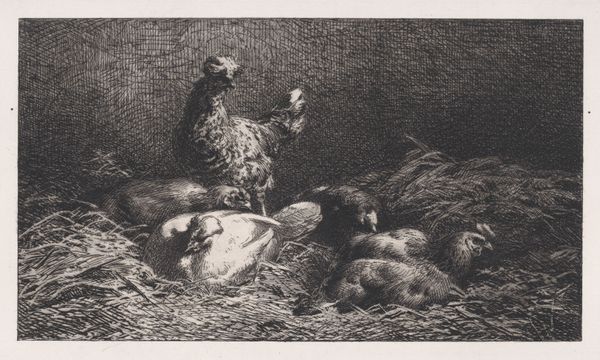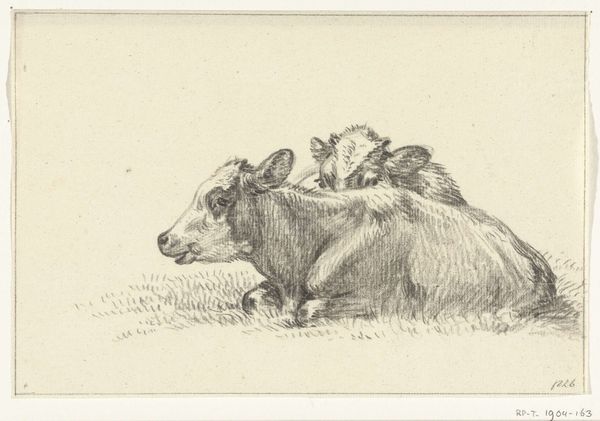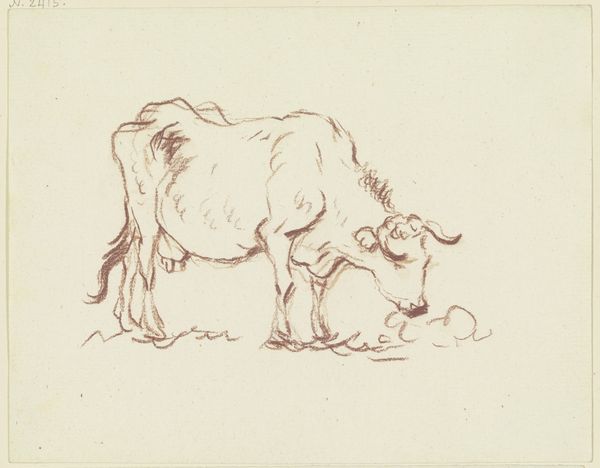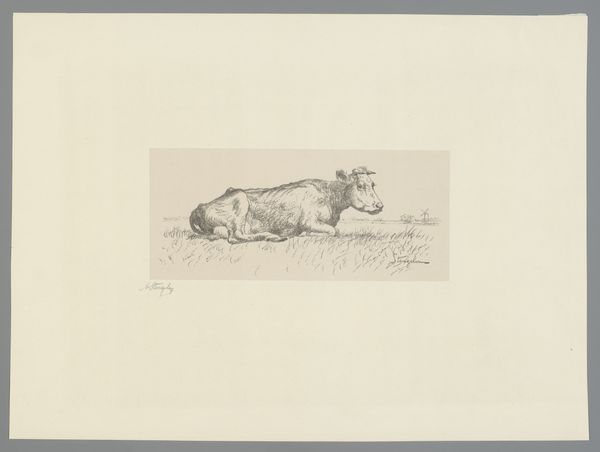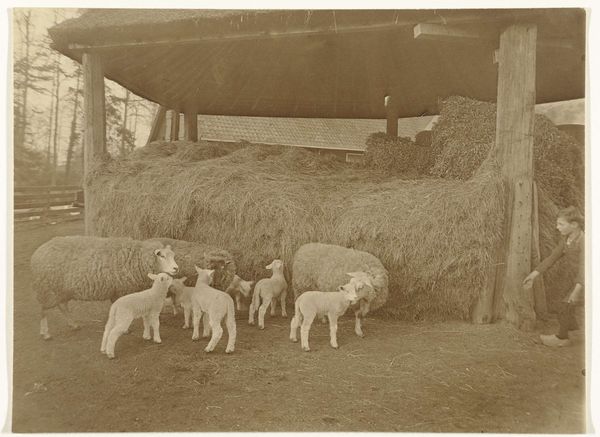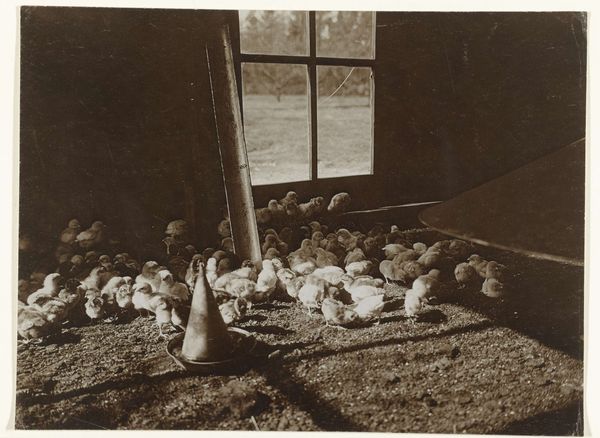
print, etching
#
animal
# print
#
etching
#
genre-painting
#
realism
Dimensions: height 158 mm, width 197 mm
Copyright: Rijks Museum: Open Domain
Editor: Here we have "Sow with piglets lying in a stable," an etching by Carel Lodewijk Dake, likely created between 1867 and 1886. It feels… unexpectedly intimate, almost like a family portrait. What stands out to you in this piece? Curator: It’s fascinating how Dake chooses to represent this scene. In the context of 19th-century Dutch art, this moves beyond simple genre painting. Consider how rapidly agricultural practices were changing at the time. Editor: Are you suggesting it’s a comment on those changes? Curator: Possibly. Or maybe it's reflecting on an idealized rural past, a way of life increasingly under pressure. Look at the detail given to the sow and her piglets versus the relatively stark background of the stable. Editor: So, the emphasis on the animals could be seen as a deliberate choice to highlight a specific subject? Curator: Precisely. The domestic animal moves front and center, demanding our attention. Think about who would be viewing this print. Urban populations were growing; depictions of rural life like this satisfied a specific cultural desire, shaping perceptions of the countryside. The art market played a crucial role, influencing artistic production, didn’t it? Editor: Definitely, so Dake isn’t just depicting a sow; he’s contributing to a larger cultural narrative. I never thought about a pig etching as politically loaded, but it totally makes sense now! Curator: Exactly! By framing art within historical changes we start unveiling some the social forces shaping visual imagery.
Comments
No comments
Be the first to comment and join the conversation on the ultimate creative platform.
